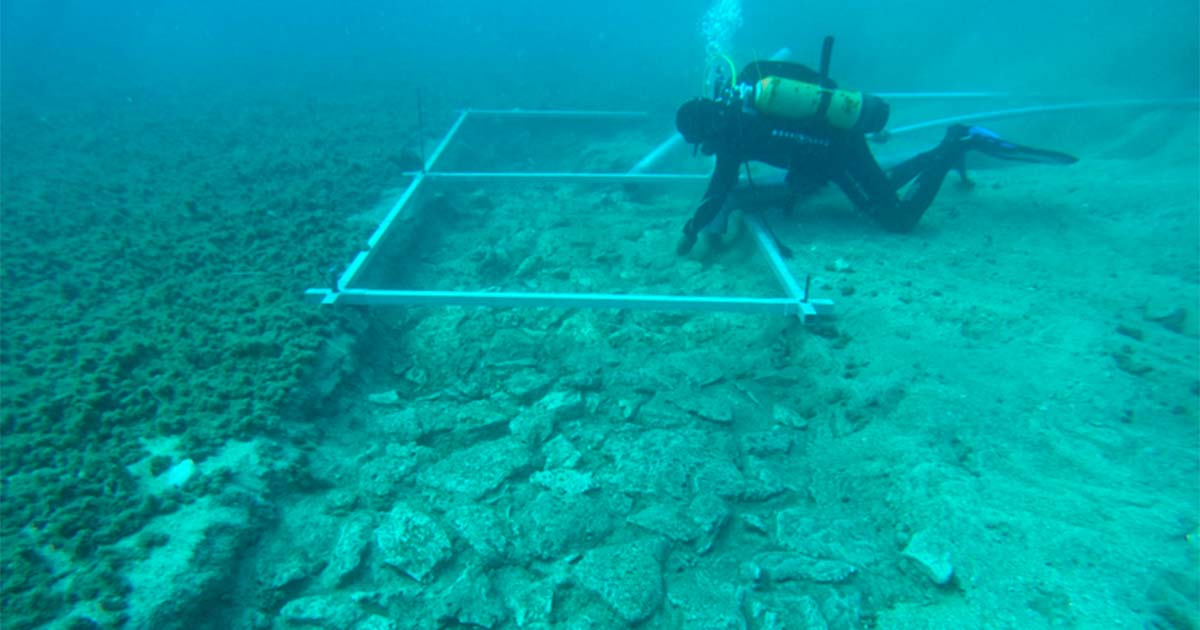7,000-Year-Old Road Discovered in Croatia’s Adriatic Depths
Croatia’s Korčula Island is ringed with archaeological sites dating back to 20,000 BC. But the discovery of a 7,000-year-old road, that once connected an ancient site with the island, was completely unexpected.
Croatia’s Korčula Island, in the Adriatic Sea, attracts sun-seekers and water sports enthusiasts who revel in its picturesque scenery and crystal-clear waters. St. Mark's Cathedral and the ancient city walls of Korčula old town boast impressive medieval architecture, dating back to the time when the town became the first place in the world to abolish slavery, in 1214 AD.
While the history of Korčula is associated with both Marco Polo, and ancient Greek colonists, it was also home to deeply-ancient cultures. The island's attractions include the Vela Spila cave, near the town of Vela Luka, which contained Paleolithic stone tools and carvings, as well as the remains of bears and deer, dating back to around 20,000 BC.

The submerged Neolithic site off Korčula Island (Sveučilište u Zadru)
Following a 7,000-Year-Old-Road
The Psephisma in Lumbada stone tablet is an ancient Greek inscription that was crafted in the 4th century BC. Representing one of the oldest written documents ever found in Croatia, it details the origins of the Greek colony some 2,300 years ago. Now, the “University of Zadar“ has announced a new archaeological discovery at the submerged Neolithic site of Soline, dating back to around 5000 BC.
Located near the village of Soline, which is known for its salt pans and beautiful beaches, previous dives at this underwater site have yielded numerous artifacts, including pottery, tools, and the remains of animal and plant species. Now, hidden beneath deposits of sea mud, an ancient road has been discovered.
The archaeologists tracked the course of the road and discovered that it connected a sunken prehistoric settlement of the Hvar culture, (approximately 5000-2500 BC) with the coast of the island of Korčula.
Carefully Stacked Stone Slabs
Project leader, Mata Parica, from the University of Zadar, told Total Croatia News that his researchers first identified “carefully stacked stone slabs,” that formed a four meter wide (13 ft) connection. Then, radiocarbon dating of wood recovered in the sea mud determined that the road was built around “4,900 BC, almost 7,000 years ago,” according to Dr. Parica.
Around 5000 BC, the region that is now Croatia was home to several distinct cultures, including the Starčevo, Vinča, and Danilo-Kosovo cultures. However, previous dives at this site recovered Hvar culture pottery, and other crafts, so it is assumed that they also built the road.
- 3000-year-old Greek Processional ‘Sacred Road’ Discovered in Turkey
- The Palace of Diocletian: Roman Retirement Home and Palace Fortress of Croatia

Evidence of another ancient site off the coast of Korčula Island (Sveučilište u Zadru)
Croatia’s Having an Archaeology Hay-Day
Meanwhile, on the other side of Korčula, another team of archaeologists from the University of Zadar are getting excited about recent discoveries in Gradina Bay, near the town of Vela Luka. This site was occupied by humans during the 5th and 4th millennia BC, and recent excavations have uncovered hitherto unknown megalithic structures, including stone tombs and circles.
Professor Igor Borzić, the project head, said after he “noticed the strange structures” in Gradina Bay, he called in the dive team from the Soline site. At a depth of 4 to 5 meters (13ft - 16.40ft), the divers found an “almost identical” site to the one at Soline. Further dives in the sea mud recovered Neolithic flint blades, stone axes, and fragments of millstones, which were all left behind by some of the first farmers in Croatia, and on the planet.
Hidden Deep History of Korčula Island
The reason these Neolithic farming settlements are now underwater is because of changes in ocean currents, volcanic activity, melting ice sheets and glaciers, thermal expansion of seawater, and other geological processes leading to climate change.
- Lara Crufts Sniff Out Ancient Tombs In Croatia
- Luxury Roman Villa and Mosaic Found on Croatian Island of Hvar
This sea level rise caused the Neolithic sites which pepper coastal Croatia to be around 4 or 5 meters (13ft - 16.40ft) under water. Knowing this, through the discovery of submerged sites at this depth, the archaeologists now have a target depth to focus their future research on. And undoubtedly, we will soon be seeing the discovery of a swathe of similar sites around the coastline of Croatia’s Korčula Island.
Top image: Below the deposits of sea mud, a marine archaeologist studies a road that once connected an offshore prehistoric settlement to mainland Korčula Island. Source: Sveučilište u Zadru
By Ashley Cowie



















